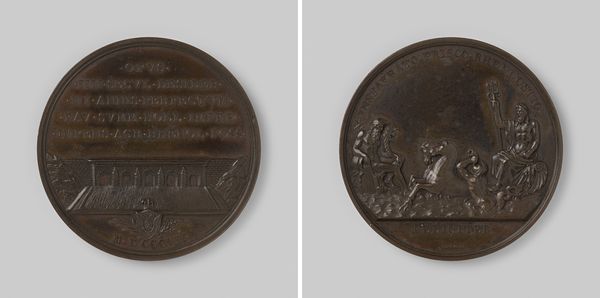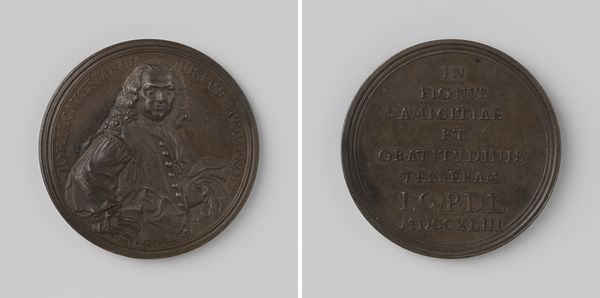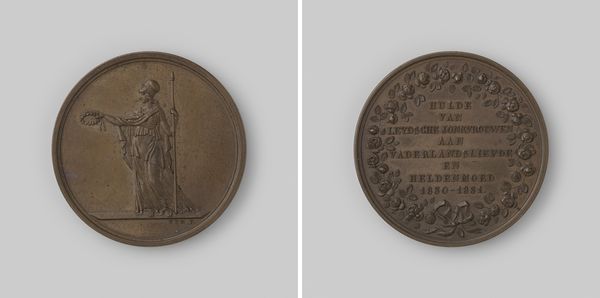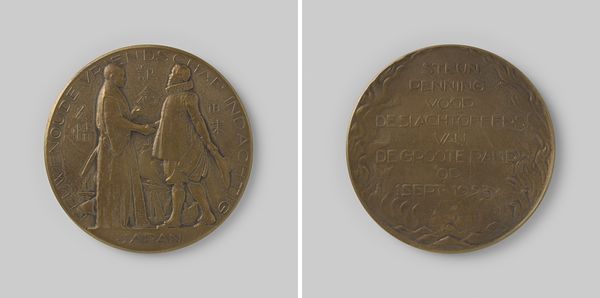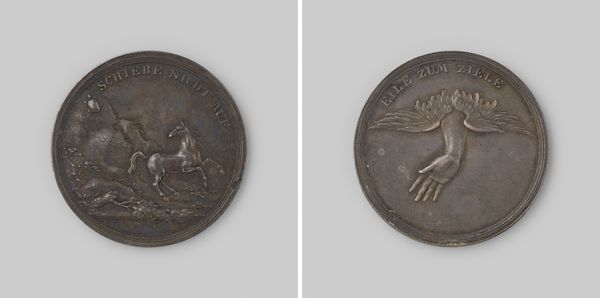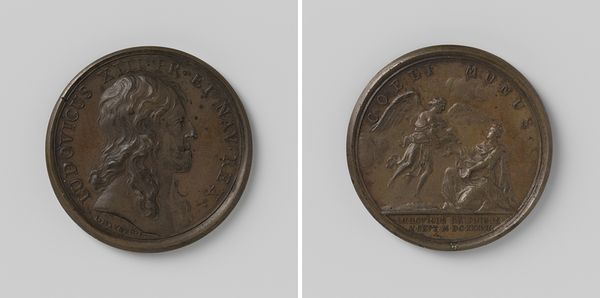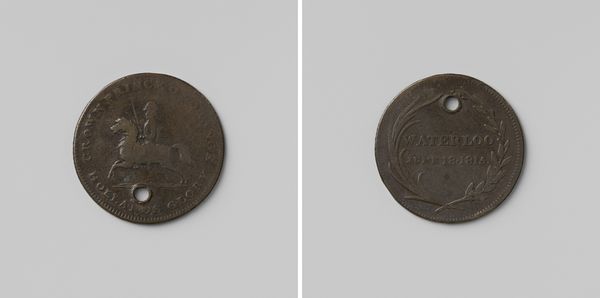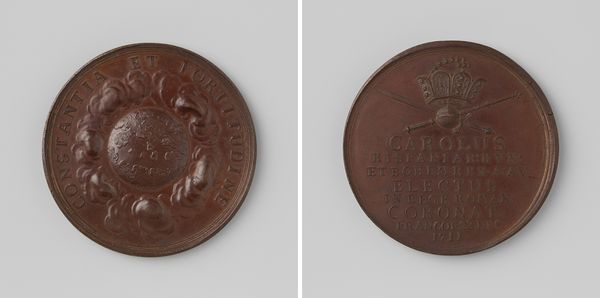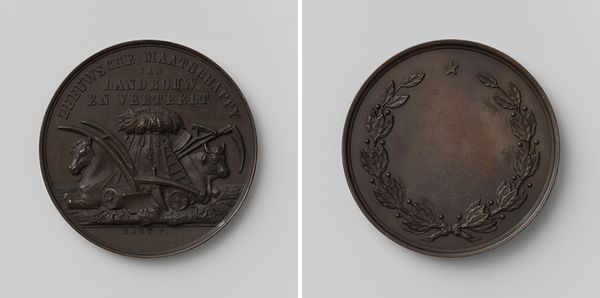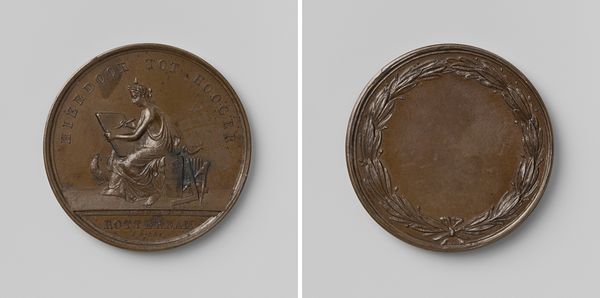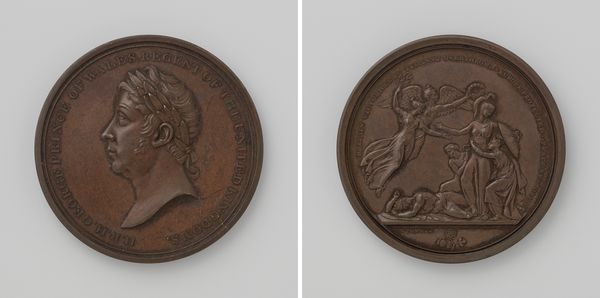
Hollandsche Stoomboot Maatschappij, penning voor trouw en bijzondere diensten 1913 - 1914
0:00
0:00
metal, relief, bronze, sculpture
#
portrait
#
metal
#
relief
#
bronze
#
stoneware
#
sculpture
Dimensions: diameter 6.5 cm, weight 106.92 gr
Copyright: Rijks Museum: Open Domain
Curator: This is a bronze medal created by Chris van der Hoef between 1913 and 1914. It resides here at the Rijksmuseum. It's titled "Hollandsche Stoomboot Maatschappij, penning voor trouw en bijzondere diensten." Editor: It has a strong allegorical quality. My initial impression is one of archaic formality mixed with what seems like emerging Art Deco elements. The muted bronze palette and shallow relief emphasize texture. Curator: Precisely. We see how the aesthetic priorities emphasize legibility. The subject, on one side, appears to depict a stylized man perhaps meant to represent labor. Given the steamship company, I would suppose that man is associated with Dutch industriousness. Editor: The lettering is certainly a key component here, functionally descriptive on one face while interwoven abstractly with the figure and ornamental waves on the other. It's a unified design that integrates image and text. What can you tell me about this company? Curator: The Hollandsche Stoomboot Maatschappij, the Dutch Steamship Company, played a key role in transatlantic shipping at the time. This medal would have been presented to workers for loyal and exemplary service to the company, as the inscription implies. Its context is strongly embedded in Dutch economic history of the period. Editor: The male nude presents some ambiguities, as the subject of a steamship reward. Is he intended as an emblem of the Dutch 'worker,' and is that identity primarily about physical capability? There's something inherently contradictory between a classically modeled physique and an industry dependent on increasingly technological labor practices. Curator: I find the tension very interesting. The use of this classic motif seems intended to evoke pride in industry. I would add that we must recognize such symbolic images are always strategically used to normalize industrial ambition in this era of economic development. Editor: Agreed. This makes visible the relationship of an idealized worker, and an era of expanding industrial power. Curator: I find considering its function is particularly vital: this wasn't a piece for a museum, but to reward those whose work enabled these historic changes. Editor: That functionality provides useful grounding. A rewarding dive into this seemingly unassuming little disk.
Comments
No comments
Be the first to comment and join the conversation on the ultimate creative platform.
